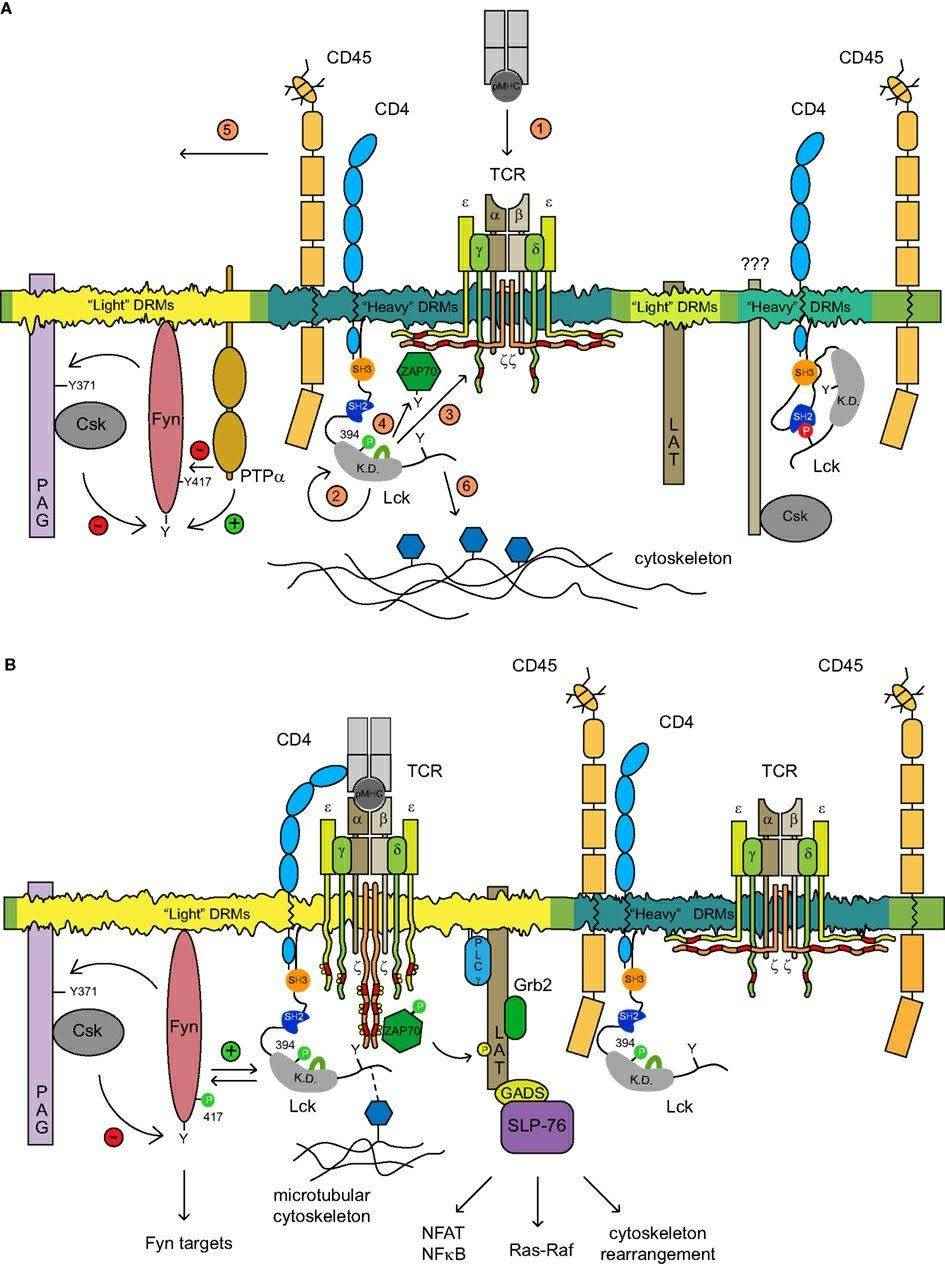What is LCK Protein
What is LCK Protein?
The LCK protein, a member of the Src family of non-receptor tyrosine kinases, is a linchpin in cellular signaling, particularly within T cells. Predominantly expressed in these white blood cells, LCK plays a pivotal role in orchestrating immune responses. Structurally, LCK exhibits distinct functional domains, including Src homology 2 (SH2) and Src homology 3 (SH3) domains, alongside a kinase domain. This molecular architecture allows LCK to engage in intricate protein-protein interactions, forming the foundation for its diverse functionalities.
The Function of LCK Protein
LCK's primary function revolves around T cell activation, a fundamental step in immune responses. Upon encountering antigens, LCK is activated, initiating a cascade of events critical for the immune system's efficacy. Through phosphorylation of key signaling molecules such as the T-cell receptor (TCR) and co-receptors CD4 or CD8, LCK finely tunes the immune response. Additionally, LCK modulates immune checkpoints, ensuring a delicate balance between activation and suppression. Dysregulation of LCK can lead to autoimmune diseases, immunodeficiency disorders, or contribute to cancer evasion of immune surveillance.
LCK-Related Diseases
Autoimmune Diseases: Diseases like rheumatoid arthritis and lupus showcase the consequences of LCK dysregulation. An imbalance in immune responses triggered by aberrant LCK activity leads to the immune system attacking the body's own tissues.
Immunodeficiency Disorders: Deficiencies in LCK activity result in weakened immune responses, rendering individuals susceptible to infections. Unraveling LCK's role in immunodeficiency disorders offers insights for targeted therapeutic interventions.
Cancer: LCK emerges as a potential target in cancer therapy due to its involvement in immune surveillance. Modulating LCK activity presents an opportunity to enhance the immune response against tumor cells, disrupting immune evasion mechanisms employed by cancer cells.
LCK Related Signaling Pathways
TCR Signaling Pathway: At the forefront of T cell activation is the TCR signaling pathway, where LCK phosphorylates the TCR, initiating a cascade that culminates in T cell activation. Understanding the nuances of LCK's participation in this pathway is crucial for unraveling immune responses.
Co-receptor Signaling: LCK's interaction with CD4 and CD8 co-receptors amplifies the immune response. Phosphorylation of these co-receptors enhances the affinity of TCR to antigens, ensuring a robust and effective T cell activation process.
Immune Checkpoint Regulation: LCK's influence on immune checkpoints, such as PD-1 and CTLA-4, highlights its role in fine-tuning immune responses. This regulatory function positions LCK as a potential target for therapeutic interventions aimed at enhancing anti-cancer immune responses.

Figure 1. The proposed model of TCR triggering mechanism. (Filipp, D., et al. 2012)
Applications of LCK in Biomedical Research
Diagnostic Biomarker: Monitoring LCK levels and activity serves as a diagnostic biomarker, offering insights into diseases characterized by immune dysfunction. Early detection of LCK dysregulation can facilitate timely interventions.
Prognostic Indicator: In the context of cancer, evaluating LCK expression and activity provides a prognostic indicator. High LCK activity in tumor-infiltrating T cells may signify a robust anti-tumor immune response, guiding treatment strategies.
Therapeutic Target: Modulating LCK activity emerges as a promising therapeutic strategy. Small molecules or biologics targeting LCK could enhance T cell activation, overcoming immune suppression, and improving the efficacy of existing immunotherapies.
Drug Development: Understanding LCK's role in signal pathways offers a foundation for drug development. Researchers are actively exploring compounds that selectively target LCK, with the aim of developing novel therapies for immune-related disorders and cancers.
The LCK protein's intricate involvement in immune regulation, signal pathways, and its potential applications in biomedical contexts underscore its significance in the realm of molecular biology. As research continues to unveil the complexities of LCK, the prospect of leveraging its functions for diagnostic, prognostic, and therapeutic advancements in various diseases becomes increasingly tangible.
Recommended Products for LCK Protein
| Cat.# | Species | Product name | Source (Host) | Tag |
|---|---|---|---|---|
| LCK-692H | Human | Active Recombinant Human LCK, His-tagged | S.frugiperda | His |
| LCK-273H | Human | Recombinant Human LCK, MYC/DDK-tagged | HEK293 | Myc/DDK |
| LCK-174H | Human | Recombinant Human LCK Protein (SH3 Domain), GST tagged | E.coli | GST |
| LCK-776H | Human | Recombinant Human LCK, GST tagged | Insect Cell | GST |
| LCK-2360HFL | Human | Recombinant Full Length Human LCK, Flag-tagged | Mamanlian cells | Flag |
| LCK-3524H | Human | Recombinant Human LCK protein, His-tagged | E.coli | His |
| LCK-8482HF | Human | Active Recombinant Full Length Human LCK Protein, BTN-tagged | Insect (sf21) | BTN |
| Lck-1300M | Mouse | Recombinant Mouse Lck Protein, MYC/DDK-tagged | HEK293T | MYC/DDK |
| LCK-3365R | Rat | Recombinant Rat LCK Protein | Mammalian Cell | His |
| LCK-220Z | Zebrafish | Recombinant Zebrafish LCK | Mammalian Cell | His |
Reference
- Filipp, D., et al. Lck, Membrane Microdomains, and TCR Triggering Machinery: Defining the New Rules of Engagement. Front Immunol. 2012, 3: 155.

